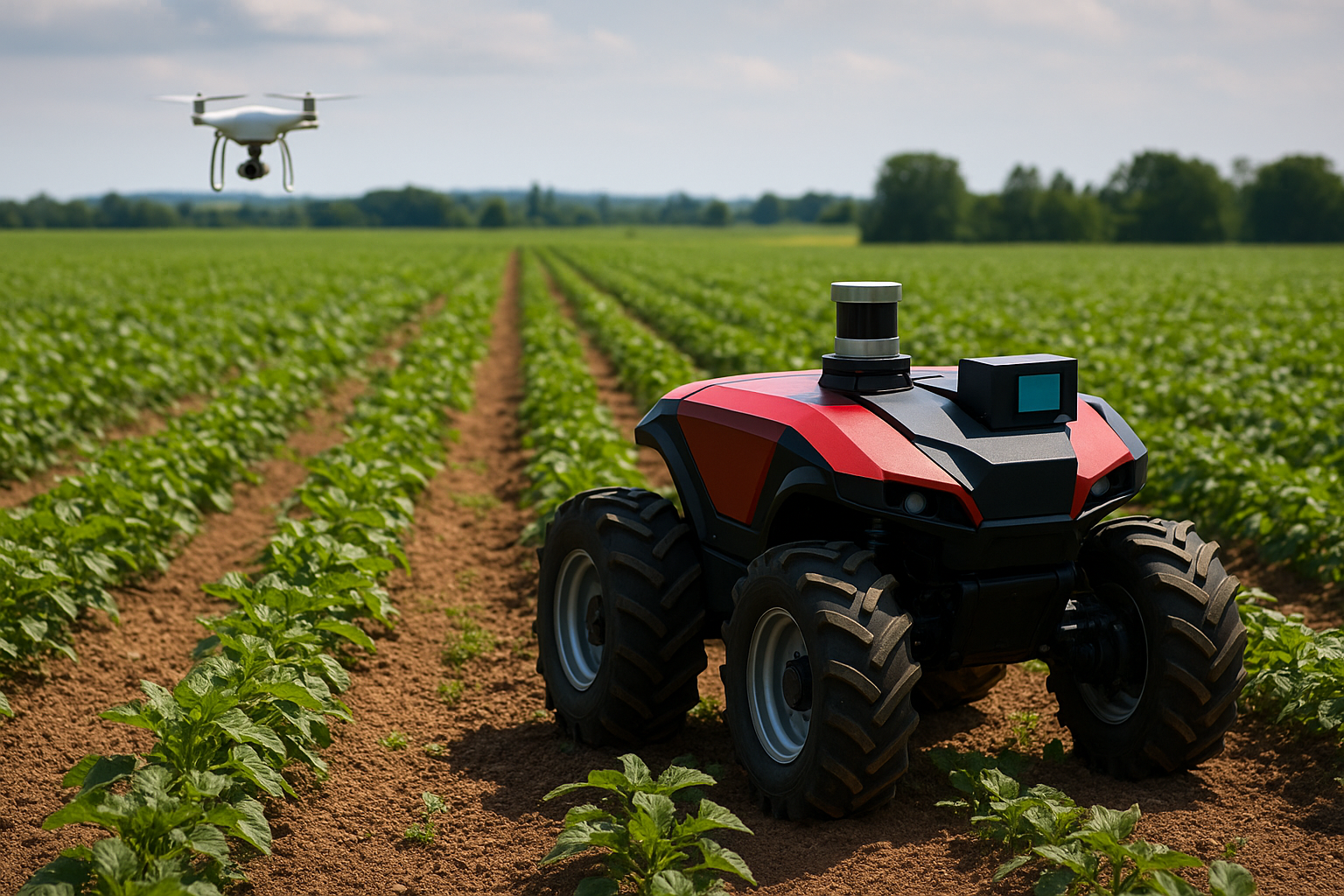AI-powered robots and sensors promise sustainable, data-driven farming
Iintegrating data from multiple sensing sources, multispectral and hyperspectral imaging, LiDAR, and thermal cameras, enables early detection of plant stress, nutrient deficiencies, and disease outbreaks. This approach enhances the effectiveness of variable-rate application of fertilizers, irrigation, and crop protection, allowing farmers to act before damage escalates.

A new review published in Agronomy examines how integrating remote sensing technologies with autonomous ground robots is transforming precision agriculture. The study, titled “Integrating Remote Sensing and Autonomous Robotics in Precision Agriculture: Current Applications and Workflow Challenges”, explores the state of the art in sensors, data processing, and workflow integration while outlining both the opportunities and obstacles facing this field.
The authors argue that combining ground-based robots with multi-scale sensing, from satellites and drones to on-board hyperspectral and thermal cameras, can deliver more accurate field data, support targeted interventions, and reduce the environmental footprint of farming. However, they stress that the technology’s full potential depends on robust data pipelines, interoperability standards, and practical deployment strategies.
How robots and remote sensing are shaping the future of farming
The study describes how autonomous field robots equipped with advanced sensors complement satellite and drone data by providing high-resolution, close-range measurements of soil and crop conditions. These robots can capture detailed information on canopy health, soil moisture, nutrient levels, weeds, and pest pressures, enabling more precise input application.
Iintegrating data from multiple sensing sources, multispectral and hyperspectral imaging, LiDAR, and thermal cameras, enables early detection of plant stress, nutrient deficiencies, and disease outbreaks. This approach enhances the effectiveness of variable-rate application of fertilizers, irrigation, and crop protection, allowing farmers to act before damage escalates.
The authors note that for these insights to be practical, the collected data must be streamlined into geographic information systems (GIS), farm management information systems (FMIS), and decision-support platforms (DSS). Coupling remote sensing with predictive crop and radiative transfer models improves not only current diagnostics but also yield forecasts and long-term resource planning.
What hinders broader adoption in the field
Despite the progress, the review identifies persistent barriers to scaling these integrated systems. One major challenge is the sheer volume and complexity of multi-source data, which requires significant processing power and reliable connectivity. The authors stress that splitting tasks between edge computing on robots for rapid analysis and cloud computing for heavy model training and long-term storage is essential for timely, actionable insights.
Another obstacle is the lack of standardized data protocols and interoperability, which makes it difficult to seamlessly transfer outputs from sensing devices into farm management systems. The authors recommend the adoption of widely used formats such as ISOXML and ADAPT to bridge these gaps.
The study also points to economic and practical constraints, including the high upfront costs of robots and sensor platforms, as well as the need for specialized skills to operate and maintain these systems. Environmental factors such as rugged terrain, canopy cover in orchards, and adverse weather still limit the reliability of some sensing techniques.
Finally, the authors warn that while artificial intelligence models such as U-Net and YOLO are proving effective for tasks like plant detection and stress classification, their performance often depends on high-quality labeled datasets that remain scarce for many crops and growing environments. This limitation hampers model transferability across regions.
Key lessons for designing the next generation of smart farming systems
The future of integrated remote sensing and robotics in precision agriculture will depend on the convergence of several advances.
First, hybrid data processing strategies combining edge and cloud computing can ensure fast detection in the field while enabling robust learning across large datasets. Second, standardized data flows are critical for linking multi-source sensing to actionable prescriptions in FMIS platforms.
Third, customizing hardware and navigation for specific crop systems, such as adapting robots for orchard canopies versus open-field vegetables, will improve both efficiency and reliability. The authors also advocate for developing digital twins of farms to simulate interventions, test workflows, and track long-term performance.
The study further points to the promise of transfer learning, reinforcement learning for autonomous robot control, and expanded open datasets to drive greater adaptability across climates and crop types.
- FIRST PUBLISHED IN:
- Devdiscourse










